Moose are known for being dangerous and aggressive animals that live in the northern reaches of North America, Europe, and Eurasia. Their incredible exploits of charging through chest-high snow and scaring off large predators are almost the stuff of legends. So, how do they differ from horses? Although they are both large, fur-covered quadrupeds, they are quite distinct from one another. Take a look as we explore the main differences between a moose vs horse.
We’ll show you the physical differences between each so you can see how they are suited to live in unique conditions!
Comparing a Moose and a Horse

| Moose | Horse | |
| Size | Weight: 600lbs to 1,500lbs Height: 4.6ft to 6.9ft Length 7ft to 10ft | Weight: 600lbs to 1,200lbs Height: 5ft to over 7ft Length: 6ft to 8ft |
| Speed | 35 mph | 30-55 mph depending on breed |
| Antlers | Massive, elaborate antlers that demonstrate social rank | No antlers |
| Domestication | Has never been domesticated and are rarely ridden | Commonly ridden and domesticated for war, travel, and labor |
| Colors | – Usually brown or brownish-black with various shades throughout their coat | – Numerous colors including brown, white, black, cinnamon, gold, and more – One or two-coat colors |
| Hooves | Cloven hooves with two toes on each foot | Solid hooves on each foot without numerous toes. |
| Fur Coats | A two-layer fur coat with a layer of guard hairs on top and a thick undercoat | A single layer of hair that grows thick during cold months and sheds in hot months |
The 7 Key Differences Between Moose vs Horse
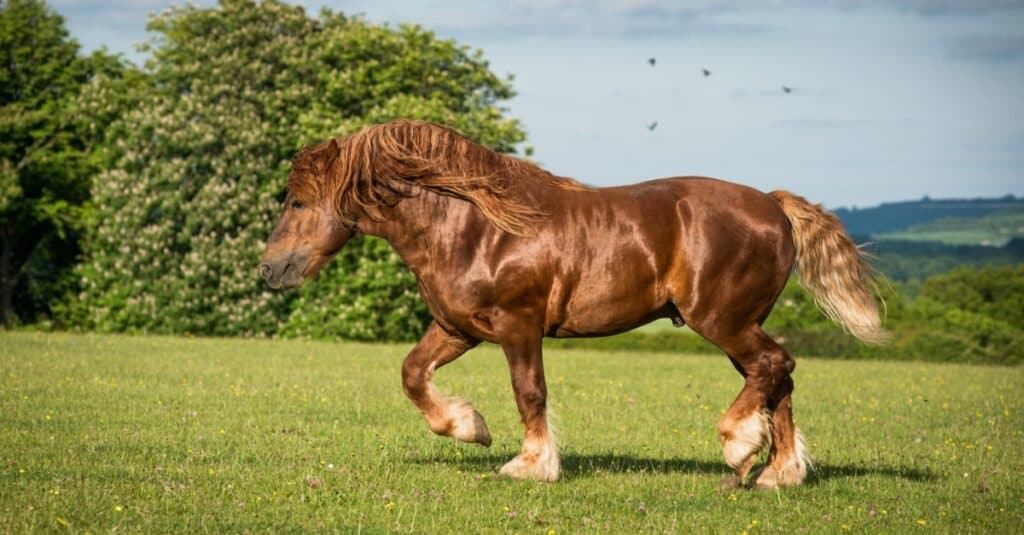
Horses and moose are unique in terms of their size, body shape, and domesticity.
©Nicole Ciscato/Shutterstock.com
The biggest differences between moose and horses are their size, morphology, and level of domestication. Moose can be substantially larger than many horse breeds, growing taller, heavier, and longer than the other animal.
Moose and horses are quadrupeds, but male moose have antlers and horses do not. Also, moose have a dewlap, a fatty flap of skin that hangs below their chin, but horses do not.
Horses are domesticated and moose are not domesticated even though some moose have been trained to allow riders on them. However, the level of domesticity and usefulness of horses is not found in moose at all.
Moose vs Horse: Size
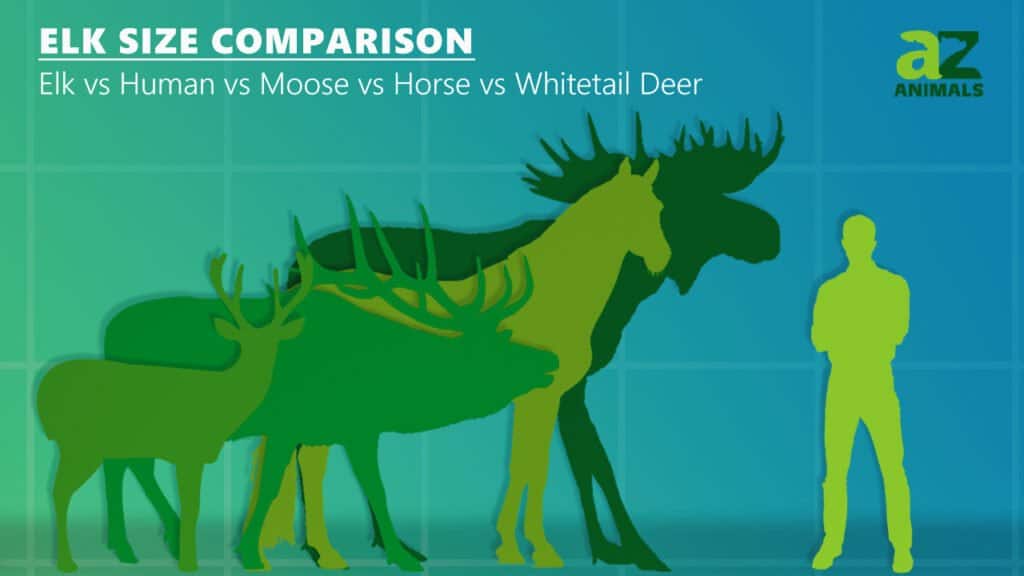
The average moose is taller and heavier than the average horse. The rare outlier horses, the tallest and biggest horses, can come close in some respects, though.
A moose weighs between 600lbs and 1,500lbs, and the average horse weighs between 600lbs and 1,200lbs. The average moose can stand up to about 7ft tall, and the tallest horse ever measured was just over 7ft tall. Horses that rival the size of a moose are exceptionally rare.
All in all, moose are larger and heavier than horses in most cases.
Moose vs Horse: Speed
Horses are faster than moose by quite a bit. Moose can run at speed of about 35 mph at maximum, and they don’t let snow or mud slow them down that much. Horses that have been bred for speed and run upon optimized tracks can regularly reach 40 mph and as high as 55 mph while running.
Moose vs Horse: Antlers
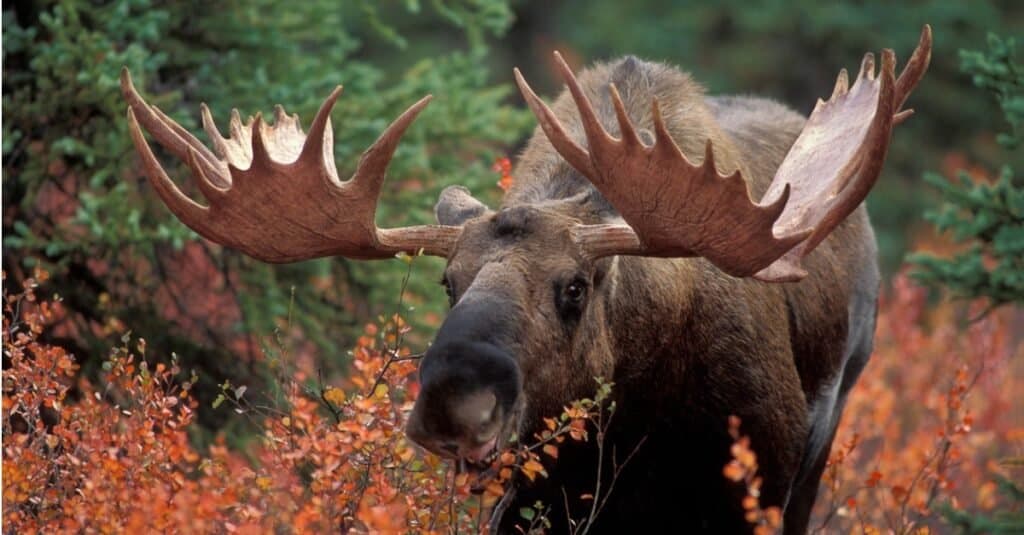
Male moose have enormous antlers that they use to battle against other members of their society for position.
©iStock.com/RONSAN4D
Moose have antlers and horses do not. A moose will use their antlers for several reasons including showing off their strength and social rank and battling against other moose for a position in their social group. They will use these antlers to clash and assert dominance over other moose, settling disputes without deadlier measures.
Like horses, moose use their body weight and legs if they are trying to seriously injure or kill another creature.
Moose vs Horse: Domestication
Moose are not domesticated but horses are domesticated. Some moose have been tamed in the past by raising them from the time they were young. People have managed to ride moose that were accustomed to people, too. However, wild moose are not tame, and they probably will never be. Attempting to approach or ride a moose in the wild is a surefire way to be severely harmed or killed.
Horses have been domesticated, though. They are used for farm work, travel, and as a form of entertainment in the modern day. In the past, they were used for deliveries and even as weapons of war.
Moose vs Horse: Colors
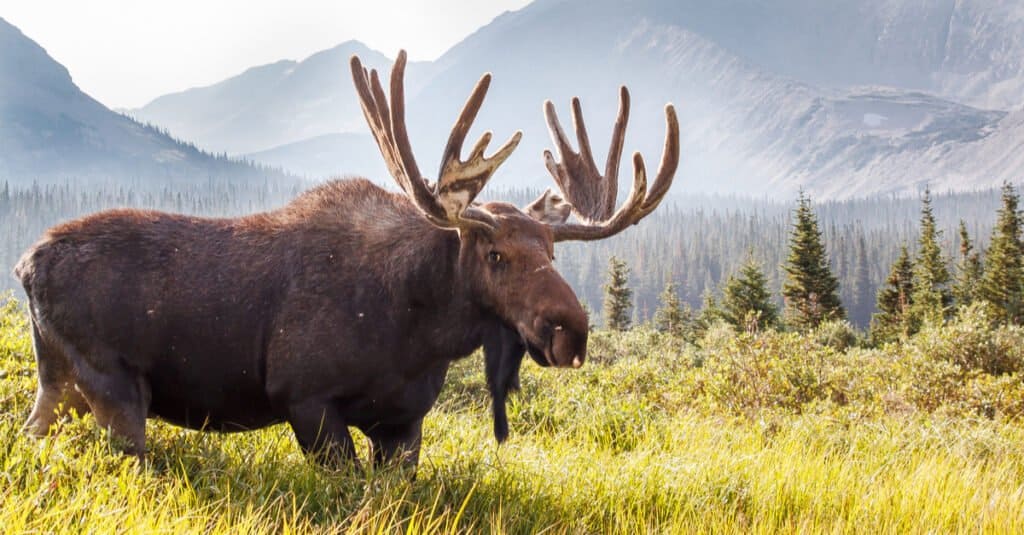
A moose’s fur comes in various shades of brown, but horses can appear as many colors.
©Michael Liggett/Shutterstock.com
Moose colors are various shades of brown and black mixed and spread throughout their coat. Thus, they are two-colored and there is very little variation in that color scheme. Horses appear with many colors including black, white, gold, and more, but they are usually one-colored with the exception of certain breeds like the Appaloosa.
Moose vs Horse: Hooves
Moose hooves are cloven, so they have two toes on each foot, but horses have one whole hoof on each foot. Also, moose benefit from having these cloven hooves because it increases the amount of surface-area contact that they have with the ground beneath them. This gives them better traction in the snowy, muddy areas in which they live.
Horses’ single hooves allow them to exert a lot of power from their legs and also limit the amount of impact they suffer when running.
Moose vs Horse: Fur Coats
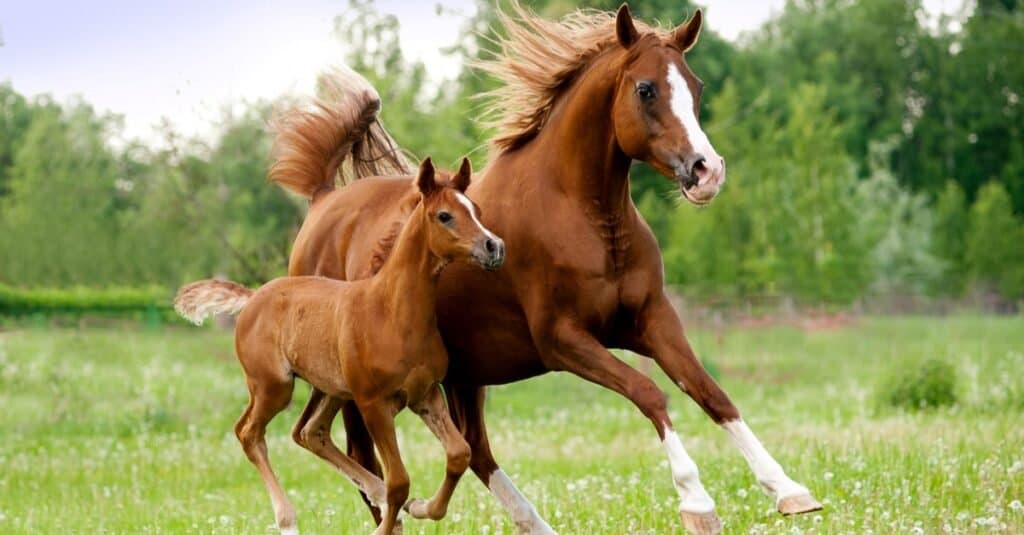
Horse have short fur coats that consist of a single layer.
©Olga_i/Shutterstock.com
A moose’s fur coat is two-layered, but a horse’s fur coat consists of a single coat. Moose fur helps them survive in the brutally cold areas in the northern hemisphere which they occupy. The outer layer of their fur is called guard hairs, and they’re hollow hairs that help moose keep their underlayer dry. The undercoat is thick and designed to insulate the body so they don’t lose too much heat in cold weather.
Horses only have a single layer of fur that gets thicker in the winter and sheds in the warmer months. They don’t require dual-layer fur because they don’t reside in such cold, wet environments.
Moose and horses have many unique qualities to them. Horses are faster but moose are heavier, larger, and more powerful. Telling these two animals apart is easy when you look at their morphological differences alone. Between the moose’s antlers, dewlap, coloration, and overall size, the chances are good that you won’t confuse one of these animals for the other.
Still, when you add in less prominent factors to the examination, like fur, hooves, and domestication, the differences between these two mammals become even more pronounced and easy to pick out.
The photo featured at the top of this post is © iStock.com/RichardSeeley
Thank you for reading! Have some feedback for us? Contact the AZ Animals editorial team.







